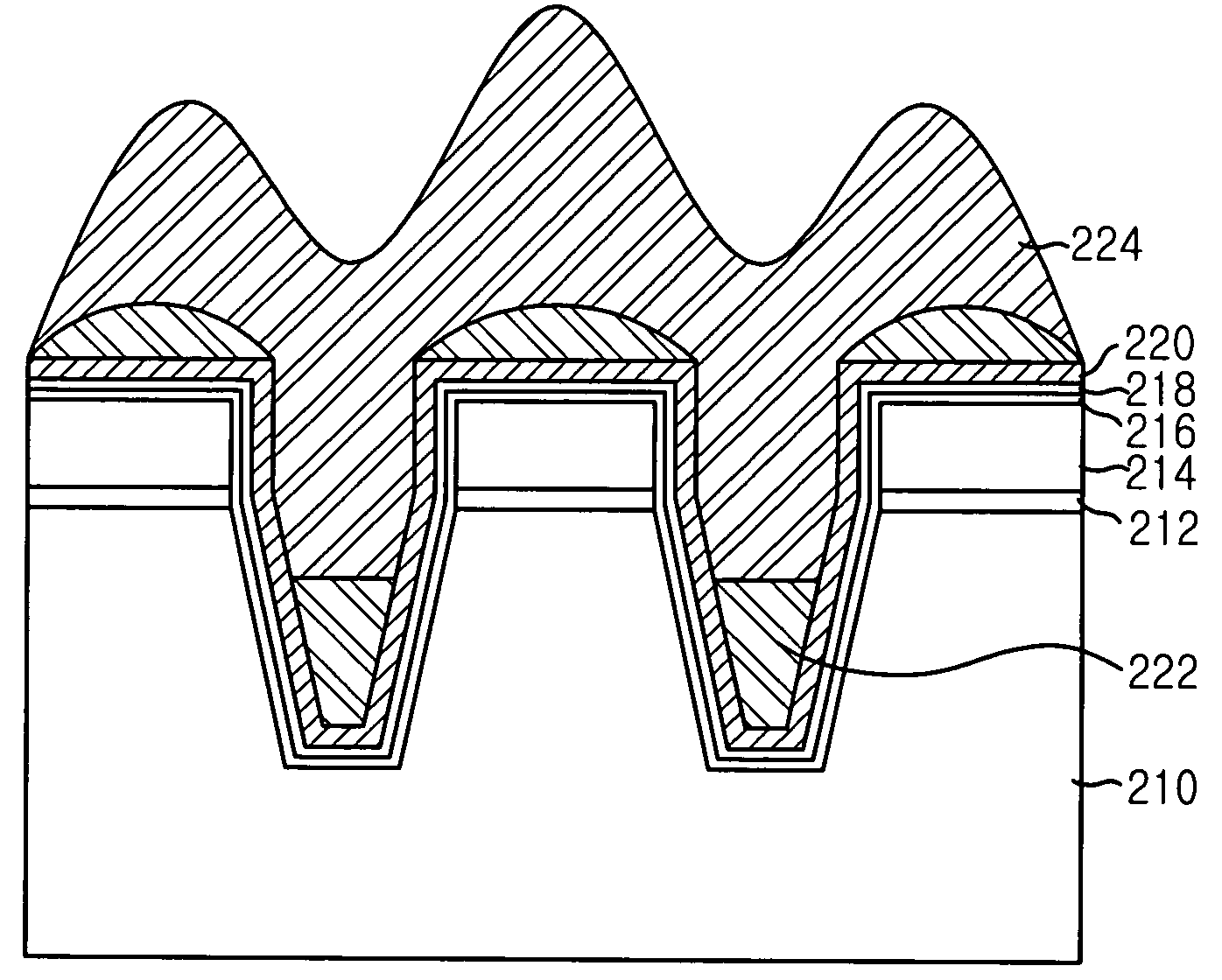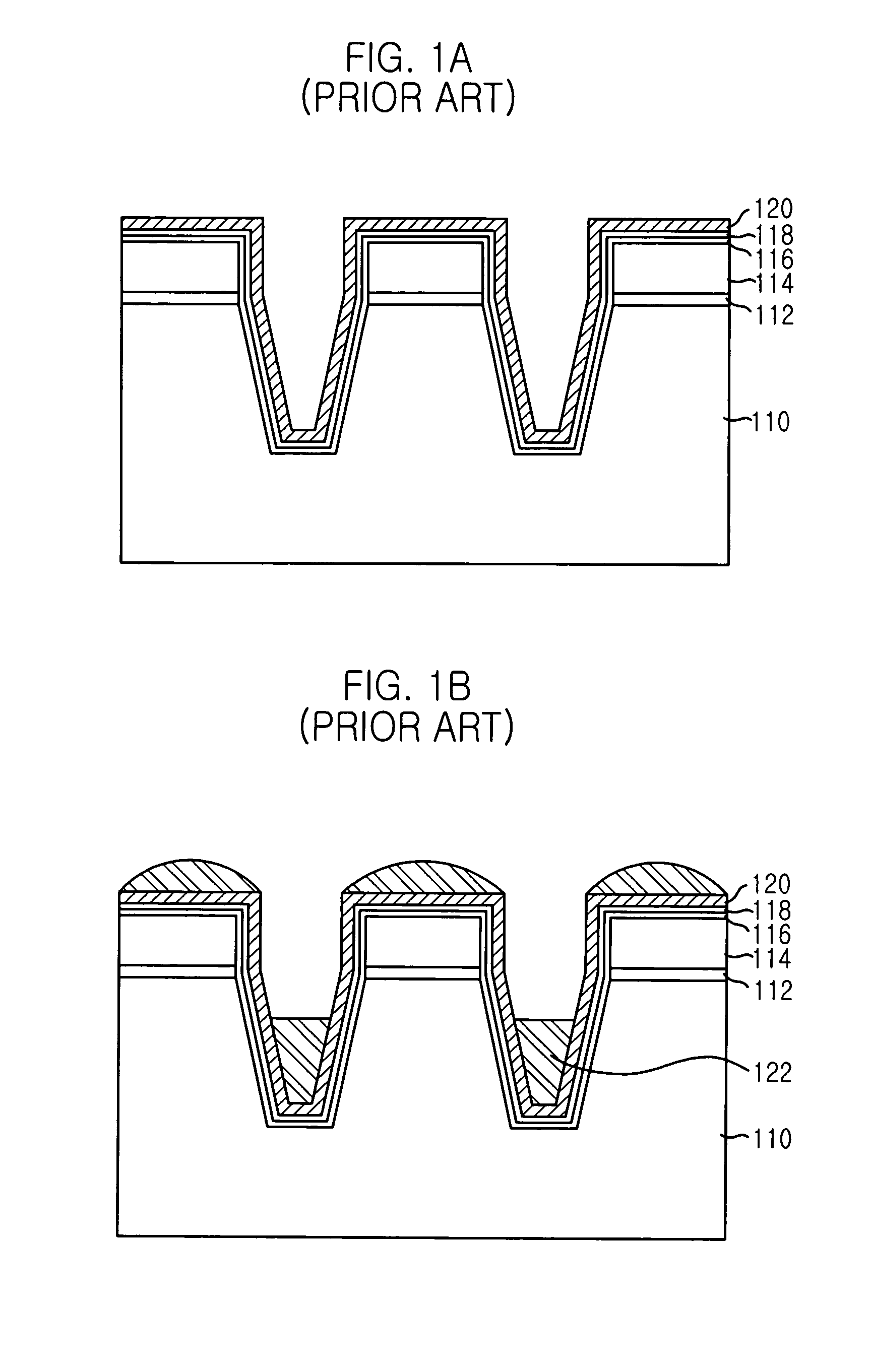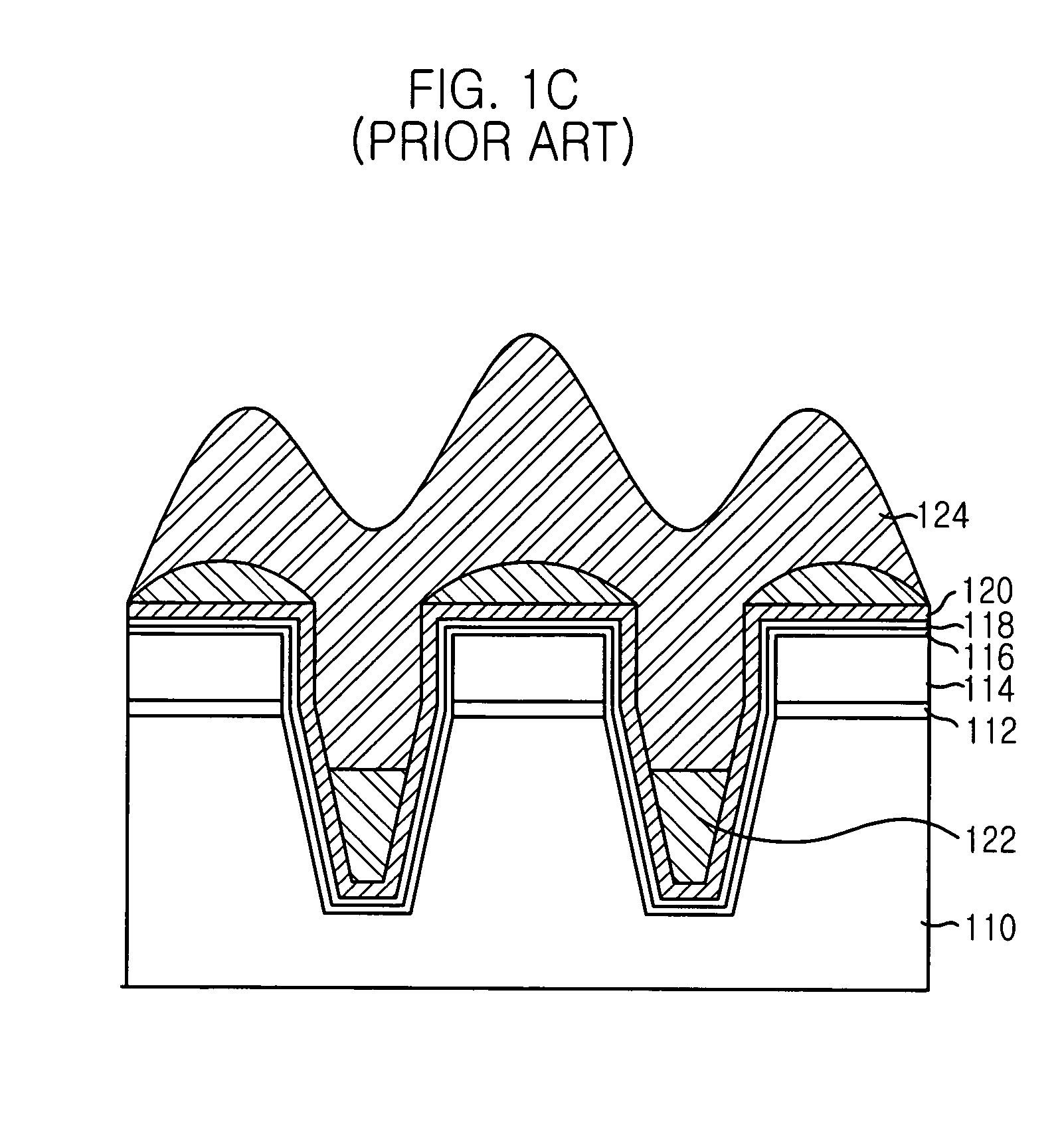Method for manufacturing shallow trench isolation in semiconductor device
a semiconductor device and trench isolation technology, applied in semiconductor/solid-state device manufacturing, basic electric elements, electric devices, etc., can solve the problems of reducing the design rule, deteriorating field oxide (fox), and rarely using locos technique to form, so as to improve the gap-filling property
- Summary
- Abstract
- Description
- Claims
- Application Information
AI Technical Summary
Benefits of technology
Problems solved by technology
Method used
Image
Examples
Embodiment Construction
[0023]There are provided in FIGS. 2A to 2C and FIGS. 3A and 3B cross sectional views setting forth a method for manufacturing a shallow trench isolation (STI) in a semiconductor device in accordance with a preferred embodiment of the present invention. It should be noted that like parts appearing in FIGS. 2A to 2C and FIGS. 3A and 3B are represented by like reference numerals.
[0024]Referring to FIG. 2A, a process for manufacturing the STI in the semiconductor device begins with preparing a semiconductor substrate 210 obtained by a predetermined process. Afterward, a pad oxide layer and a pad nitride layer are formed on the semiconductor substrate 210 in sequence. Then, photoresist masks (not shown) are formed on predetermined locations of a top face of the pad nitride layer. Thereafter, the pad nitride layer and the pad oxide layer are patterned into a first predetermined configuration by using the photoresist masks as mask patterns till a top face of the semiconductor substrate 210...
PUM
 Login to View More
Login to View More Abstract
Description
Claims
Application Information
 Login to View More
Login to View More - R&D
- Intellectual Property
- Life Sciences
- Materials
- Tech Scout
- Unparalleled Data Quality
- Higher Quality Content
- 60% Fewer Hallucinations
Browse by: Latest US Patents, China's latest patents, Technical Efficacy Thesaurus, Application Domain, Technology Topic, Popular Technical Reports.
© 2025 PatSnap. All rights reserved.Legal|Privacy policy|Modern Slavery Act Transparency Statement|Sitemap|About US| Contact US: help@patsnap.com



